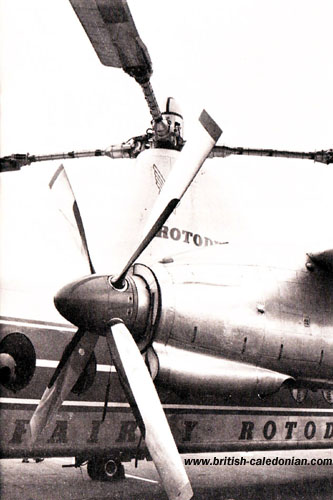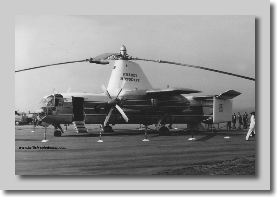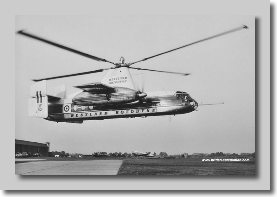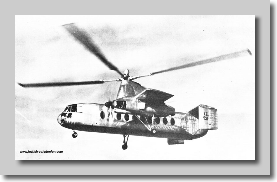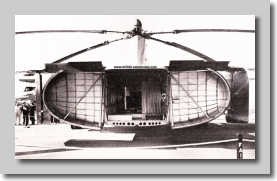G-ABUA - The BUA Rotodyne

If you have any images you can share to show on the site, I would always be pleased to hear from you.
Please drop me a line anytime email
Please drop me a line anytime email
The story behind G-ABUA goes back to the 1950’s with Silver City’s interest in helicopters.
Air Commodore Griffith Powell, Silver City’s Managing Director, speaking in June 1952 spoke of two interesting proposals, one of them focussed on the use of large helicopters for cross channel vehicle ferry services.
The helicopter would carry the vehicles in detachable containers, thus the containers could be loaded without the helicopter remaining, so improving utilisation of the aircraft.
At the time there were only 11 operational helicopters in Britain so the “flying-crane” concept was way ahead of its time. But the challenge was taken up by industry.
Air Commodore Griffith Powell, Silver City’s Managing Director, speaking in June 1952 spoke of two interesting proposals, one of them focussed on the use of large helicopters for cross channel vehicle ferry services.
The helicopter would carry the vehicles in detachable containers, thus the containers could be loaded without the helicopter remaining, so improving utilisation of the aircraft.
At the time there were only 11 operational helicopters in Britain so the “flying-crane” concept was way ahead of its time. But the challenge was taken up by industry.
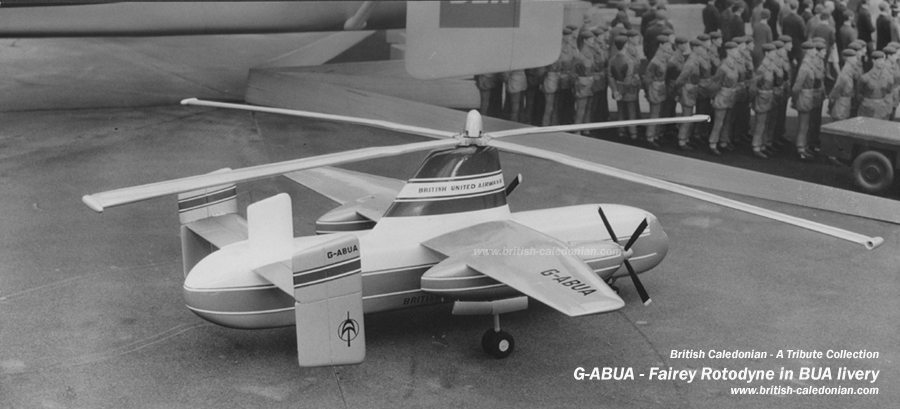
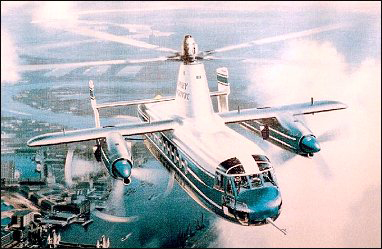
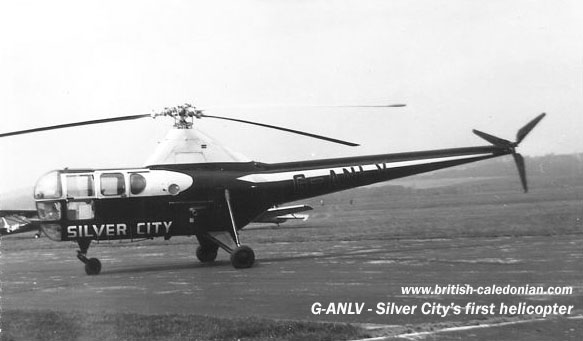
In August 1954 approval was given to Silver City to operate helicopters on all of their cross-channel routes for a period of 10 years. Their first helicopter was delivered to Ferryfield on 17th August and proving flights started on 27th using the chartered single-engined helicopter, a Westland-Sikorsky S-51, G-ANLV.
But a multi-engined helicopter was needed for passenger flights. The Fairey Rotodyne was soon identified as the preferred machine for the route as this had a proposed capacity 50% larger than a Bristol Freighter.
Although not having a detachable cargo unit as per Commodore Powell’s idea in 1952, it would have met his specification in all other ways.
But a multi-engined helicopter was needed for passenger flights. The Fairey Rotodyne was soon identified as the preferred machine for the route as this had a proposed capacity 50% larger than a Bristol Freighter.
Although not having a detachable cargo unit as per Commodore Powell’s idea in 1952, it would have met his specification in all other ways.
But the Rotodyne was still very much in development in 1954 and would not make her maiden flight until 6th November 1957.
The Fairey Rotodyne was a development of the earlier Fairy FB-1 Gyrodyne; a small five passenger aircraft with take-off rotor (like a helicopter) and two wing mounted propeller engines for forward flight. The Rotodyne was originally ordered by the Ministry of Supply (MoS) in August 1953......not too long after Powell’s idea, but the MoS would have been ordering on behalf of the RAF and British European Airways; both had expressed interest.
The Fairey Rotodyne was a development of the earlier Fairy FB-1 Gyrodyne; a small five passenger aircraft with take-off rotor (like a helicopter) and two wing mounted propeller engines for forward flight. The Rotodyne was originally ordered by the Ministry of Supply (MoS) in August 1953......not too long after Powell’s idea, but the MoS would have been ordering on behalf of the RAF and British European Airways; both had expressed interest.
The maiden flight on 6 November 1957 was piloted by Fairey’s Chief Helicopter Test Pilot Squadron Leader W. Ron Gellatly and Fairey’s Assistant Chief Helicopter Test Pilot Lieutenant Commander John G.P. Morton.
The first successful transition from vertical to horizontal and back to vertical flight was achieved on 10 April 1958.The Rotodyne performed to expectations and set a world speed record in the convertiplane category, at 190.9 mph (307.2 km/h) on 5th January 1959, over a 60 mile (100 km) closed circuit.
Fairey was acquired by Westland Aircraft in May 1960 and they proposed to develop the Rotodyne into a production aircraft capable of carrying between 57 and 75 passengers and using two of the new 5,250hp Rolls-Royce Tyne turboprops to give a cruising speed of 370 km/h, and the ability to carry up to 8 tones of freight including standard-width British Army vehicles.
The proposed Westland Rotodyne Z, had it come to fruition, would have been closer to Commodore Powell’s vision from 1952, though it would still have not been a detachable cargo unit.
The first successful transition from vertical to horizontal and back to vertical flight was achieved on 10 April 1958.The Rotodyne performed to expectations and set a world speed record in the convertiplane category, at 190.9 mph (307.2 km/h) on 5th January 1959, over a 60 mile (100 km) closed circuit.
Fairey was acquired by Westland Aircraft in May 1960 and they proposed to develop the Rotodyne into a production aircraft capable of carrying between 57 and 75 passengers and using two of the new 5,250hp Rolls-Royce Tyne turboprops to give a cruising speed of 370 km/h, and the ability to carry up to 8 tones of freight including standard-width British Army vehicles.
The proposed Westland Rotodyne Z, had it come to fruition, would have been closer to Commodore Powell’s vision from 1952, though it would still have not been a detachable cargo unit.
Though still seeking firm orders various models were produced to show off liveried Rotodynes. BUA at the time were the largest helicopter operator in Great Britain and Fairey / Westland produced a BUA Rotodyne model late in 1961.
The model was registered G-ABUA and below we have a photo of that model
The model was registered G-ABUA and below we have a photo of that model
But a lot was happening early in 1962, and time was running out for the Rotodyne.
The initial order for twelve production Rotodynes for the Royal Air Force was never confirmed, and initial interest from British European Airways did not develop into a firm order. Silver City became part of Air Holdings in January 1962, and their cross channel operations were merged with BUA's Channel Air Bridge.
It is unlikely BUA would have ordered the Rotodyne, their cross channel division Channel Air Bridge was actively engaged with the Carvair, whose flight test programme had just been completed on 30th January 1962; with their first Carvair due for delivery on 16th February 1962.
In February 1962, Westland abandoned the Rotodyne project.....I wonder where that model is now?
The initial order for twelve production Rotodynes for the Royal Air Force was never confirmed, and initial interest from British European Airways did not develop into a firm order. Silver City became part of Air Holdings in January 1962, and their cross channel operations were merged with BUA's Channel Air Bridge.
It is unlikely BUA would have ordered the Rotodyne, their cross channel division Channel Air Bridge was actively engaged with the Carvair, whose flight test programme had just been completed on 30th January 1962; with their first Carvair due for delivery on 16th February 1962.
In February 1962, Westland abandoned the Rotodyne project.....I wonder where that model is now?

The Rotodyne was a large aircraft, comparable to a Vickers Viking in size, and featured a large rotor powered by tip-jets fed a fuel-air mix from two wingtip mounted Napier Eland turboprops, using the rotor for vertical take-offs, landings and hovering, power was applied to the wing mounted tractor propellers of the turboprops engines for forward flight.
